10 Effective Ways to Save Electricity at Home: Eco-Friendly Habits

Saving electricity not only reduces your energy bills but also contributes to environmental protection by reducing greenhouse gas emissions and lessening the strain on energy resources. Below are 10 effective ways to save electricity at home, while also promoting a more sustainable environment:
1. Use LED and Compact Fluorescent (CFL) Bulbs for Energy Efficiency
One of the most effective and straightforward ways to save electricity at home is by replacing traditional incandescent light bulbs with LED (Light Emitting Diode) and CFL (Compact Fluorescent) bulbs. This simple switch not only helps reduce energy consumption but also offers long-term cost savings.
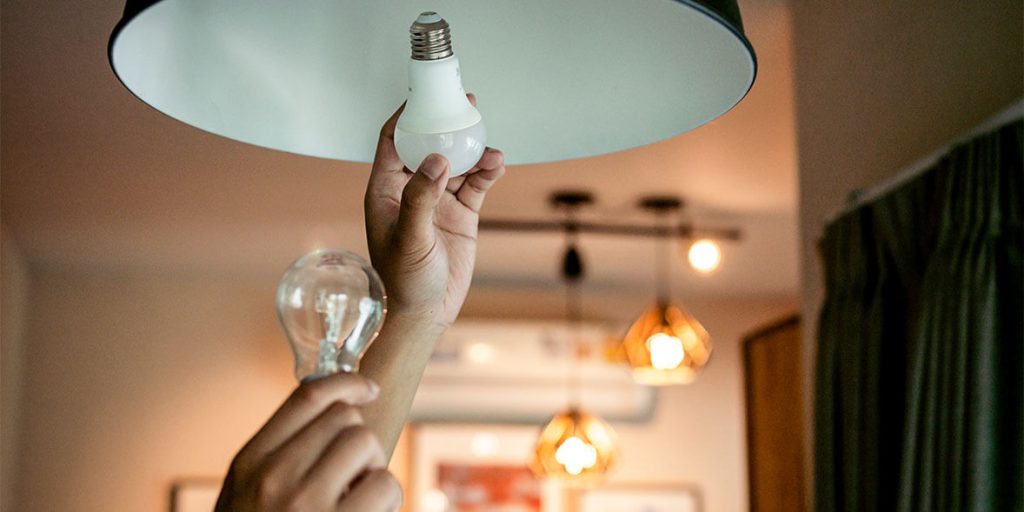
Why Switch to LED and CFL Bulbs:
- Energy Efficiency: LED and CFL bulbs are significantly more energy-efficient than traditional incandescent bulbs. They convert a higher percentage of electricity into visible light, generating less waste heat in the process. This translates into lower electricity consumption and reduced energy bills.
- Longevity: LED and CFL bulbs have longer lifespans compared to incandescent bulbs. While incandescents typically last for about 1,000 hours, LED bulbs can last up to 25,000 hours, and CFL bulbs can last around 10,000 hours. This means you’ll replace bulbs less frequently, reducing both the hassle and the cost of buying replacements.
- Cost Savings: Although LED and CFL bulbs may have a slightly higher upfront cost than incandescents, the long-term savings are substantial. The reduced energy consumption and extended lifespan lead to lower electricity bills and fewer replacement purchases.
How to Make the Switch:
- Assess Your Current Lighting: Start by identifying the areas in your home where you use incandescent bulbs. These are commonly found in fixtures like table lamps, ceiling lights, and pendant lights.
- Choose the Right Replacement: When shopping for LED and CFL bulbs, pay attention to factors like brightness (measured in lumens), color temperature (warm or cool white), and compatibility with your existing fixtures. Look for the ENERGY STAR label, which certifies their energy efficiency.
- Replace Bulbs Gradually: You don’t need to replace all your bulbs at once. Consider replacing bulbs as they burn out, or tackle one room or area at a time.
- Dispose of Old Bulbs Properly: Incandescent bulbs can be thrown away with regular household waste. However, CFLs contain a small amount of mercury and should be recycled at designated recycling centers. LED bulbs can also be recycled but typically don’t contain hazardous materials.
Benefits of Using LED and CFL Bulbs:
- Lower Energy Bills: LED and CFL bulbs use significantly less electricity to produce the same amount of light. By making this switch, you’ll see a noticeable reduction in your energy bills.
- Reduced Environmental Impact: Using energy-efficient bulbs decreases your carbon footprint by reducing the greenhouse gas emissions associated with electricity generation. This contributes to a more sustainable and eco-friendly lifestyle.
- Longer Bulb Lifespan: LED and CFL bulbs last considerably longer than incandescents, reducing the frequency of bulb replacements and the resources required for manufacturing.
- Lower Maintenance Costs: Fewer replacements mean less time and money spent on buying and changing bulbs.
Maintenance and Considerations:
To maximize the benefits of LED and CFL bulbs, regularly clean and dust fixtures to ensure they operate efficiently. Additionally, take the time to properly recycle old bulbs to minimize environmental impact.
Switching to LED and CFL bulbs is a simple and effective way to save electricity, reduce energy bills, and lower your environmental impact. It’s a small change that makes a big difference in creating a more sustainable and energy-efficient home. So, don’t wait to make the switch and start reaping the rewards.
2. Turn Off Lights When Leaving a Room: A Simple Practice for Energy Efficiency
Turning off lights when you leave a room may sound like a basic habit, but it’s a powerful and straightforward way to save electricity. This practice not only reduces unnecessary energy consumption but also extends the lifespan of your lightbulbs, saving you money and contributing to a more sustainable lifestyle.
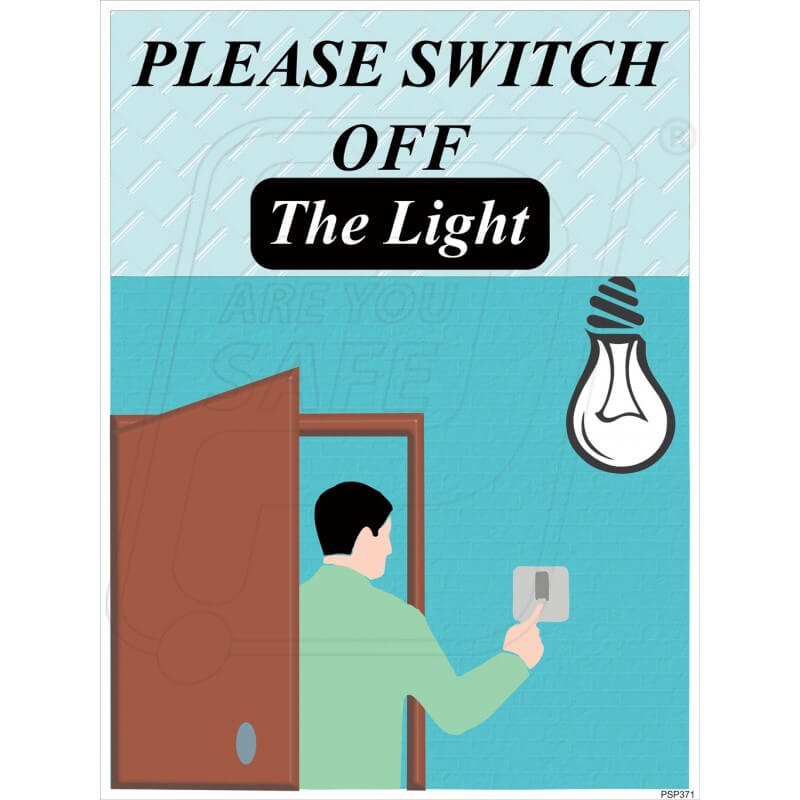
The Importance of Turning Off Lights:
- Reduction in Electricity Usage: Every time you leave a room without turning off the lights, you’re wasting electricity. Even a single light bulb can consume a significant amount of energy over time, which adds up on your electricity bill.
- Prolonged Bulb Lifespan: Light bulbs have a finite lifespan, typically measured in hours of use. Incandescent bulbs, for instance, last for about 1,000 hours, while LED and CFL bulbs can endure for tens of thousands of hours. By turning off lights when not needed, you reduce the frequency of replacements, saving both money and resources.
- Lower Environmental Impact: Electricity generation is often associated with greenhouse gas emissions and other environmental impacts. By reducing your electricity consumption, you contribute to a cleaner and more sustainable environment.
How to Make It a Habit:
- Awareness: The first step in developing the habit of turning off lights is awareness. Make a conscious effort to remind yourself and your family members to turn off lights when leaving a room.
- Use Motion Sensors: Consider installing motion-sensor lights in areas where people may forget to turn off lights, such as hallways, closets, or bathrooms. These lights automatically turn on when someone enters the room and off when the room is vacant.
- Label Switches: Place labels or reminders near light switches to encourage turning them off. Visual cues can be especially helpful for children or houseguests.
- Educate Your Household: Talk to your family members about the importance of turning off lights to save electricity and reduce your environmental impact. Encourage everyone to be mindful of this simple practice.
Benefits of Turning Off Lights:
- Lower Energy Bills: The most immediate benefit of turning off lights is reduced electricity consumption, leading to lower energy bills. The cost savings can be quite substantial over time.
- Extended Bulb Lifespan: When you turn off lights when not in use, you significantly increase the lifespan of your light bulbs. LED and CFL bulbs, in particular, can last for years with proper care.
- Reduced Environmental Footprint: Conserving electricity helps reduce your carbon footprint, contributing to environmental protection and a more sustainable future.
- Minimal Maintenance Costs: Fewer bulb replacements mean less money spent on purchasing and changing light bulbs.
Maintenance and Considerations:
In addition to turning off lights, it’s essential to maintain and clean your light fixtures regularly. Dust and dirt can accumulate on bulbs and reduce their efficiency. Clean fixtures ensure that the light is distributed more effectively, reducing the need for brighter lights.
Turning off lights when you leave a room is a small yet impactful practice for conserving electricity, saving money, and protecting the environment. By making this a habit in your household, you contribute to a more sustainable and energy-efficient lifestyle while enjoying the benefits of reduced energy bills and extended bulb lifespans. So, start today and make a positive change for your home and the planet.
3. Harness Natural Light: Enhancing Energy Efficiency and Well-Being
Utilizing natural light is a brilliant way to save electricity while improving your overall well-being. Opening curtains and turning off lights during daylight hours not only conserves energy but also creates a more pleasant and invigorating atmosphere in your home.

The Benefits of Maximizing Natural Light:
- Energy Efficiency: The most evident benefit of using natural light is reduced electricity consumption. By relying less on artificial lighting during the day, you save on energy bills and reduce your carbon footprint.
- Enhanced Mood and Well-Being: Natural light has been linked to improved mood, increased productivity, and better overall well-being. Exposure to natural light triggers the release of serotonin, a hormone that contributes to feelings of happiness and relaxation.
- Aesthetic Appeal: Natural light can accentuate the beauty of your home’s interior. It brings out the colors of your decor, making the space feel more vibrant and inviting.
- Environmental Impact: The less electricity you consume, the lower the greenhouse gas emissions associated with electricity generation. Utilizing natural light is an eco-friendly choice that contributes to a more sustainable environment.
How to Make the Most of Natural Light:
- Strategic Curtain Use: Open curtains and blinds during the day to allow natural light to flood your living spaces. Consider sheer or light-colored curtains that can diffuse light and provide privacy while still allowing sunlight to filter through.
- Use Reflective Surfaces: Mirrors, light-colored walls, and glossy or reflective surfaces can help distribute natural light more effectively throughout your home.
- Keep Windows Clean: Regularly clean your windows to ensure that dirt and grime don’t obstruct the passage of natural light.
- Daylighting: Consider architectural improvements like skylights, solar tubes, or larger windows if you want to maximize natural light in specific areas of your home.
Benefits of Harnessing Natural Light:
- Energy Savings: Maximizing natural light reduces your reliance on artificial lighting during daylight hours, which, in turn, results in lower electricity consumption and reduced energy bills.
- Improved Well-Being: Exposure to natural light has a positive impact on mood, concentration, and overall health. It can make your living space more pleasant and comfortable.
- Eco-Friendly Choice: Using natural light helps reduce greenhouse gas emissions from electricity generation, contributing to a cleaner and more sustainable environment.
- Aesthetically Pleasing: Natural light enhances the visual appeal of your home, making it feel more inviting and uplifting.
Maintenance and Considerations:
To ensure you continue to benefit from natural light, maintain your windows and keep curtains and blinds clean. Additionally, consider the orientation of your home and the path of the sun to determine the best times for harnessing natural light in each room.
Harnessing natural light is not only a practical way to save electricity but also a means to enhance your well-being and create a more aesthetically pleasing home. By making the most of daylight, you can reduce your energy bills, improve your mood, and contribute to a greener and more sustainable environment. So, embrace natural light and enjoy the many advantages it brings to your life and your home.
4. Unplug Unused Devices: Saving Electricity by Eliminating Standby Power Consumption
Unplugging unused electronic devices is a fundamental yet often overlooked way to save electricity and reduce energy bills. Many electronic devices continue to consume power, even when turned off or in standby mode. By fully unplugging devices such as TVs, computers, chargers, and other appliances when they’re not in use, or using power strips with switches, you can make a significant impact on energy conservation.
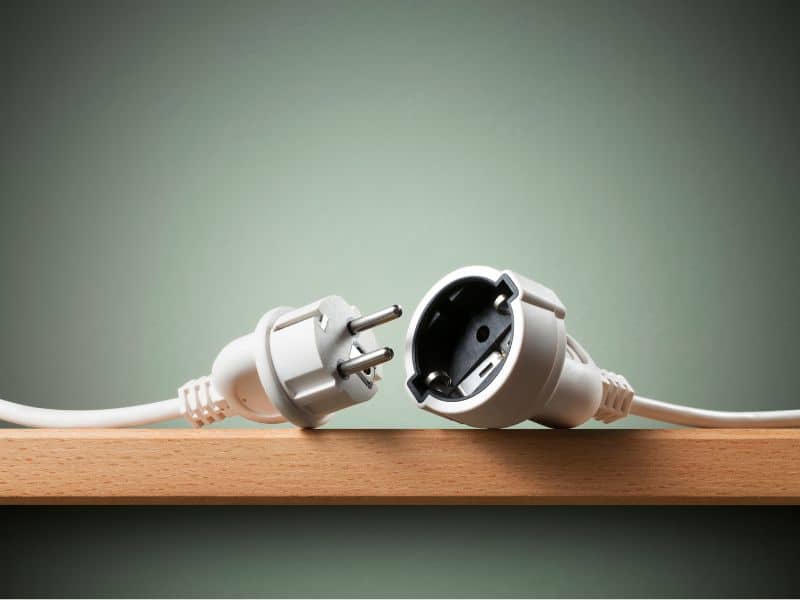
Understanding Standby Power Consumption:
Standby power consumption, also known as “phantom” or “vampire” power, occurs when electronic devices are plugged in but not actively in use. This happens for a variety of reasons, including device features like remote control compatibility or software updates. While each individual device may consume only a small amount of electricity, the cumulative effect is substantial when considering the number of devices in an average household.
Why Unplug Unused Devices:
- Reduction in Electricity Usage: Unplugging devices when not in use eliminates their standby power consumption, resulting in lower electricity bills. This is especially effective for devices with large power requirements, such as televisions and gaming consoles.
- Extended Device Lifespan: Devices that are turned off but still plugged in can experience subtle wear and tear over time due to standby power consumption. By fully unplugging them, you can extend their lifespan and reduce replacement costs.
- Environmental Impact: Standby power consumption contributes to unnecessary electricity generation and greenhouse gas emissions. Reducing it lessens your carbon footprint and contributes to a more sustainable environment.
How to Implement the Practice:
- Unplug Devices: Get into the habit of unplugging devices like chargers, televisions, computers, and other electronics when they’re not in use. This ensures they don’t consume any electricity.
- Use Power Strips: For devices that are challenging to unplug individually, such as entertainment centers or home offices, consider using power strips with switches. This allows you to cut power to multiple devices at once.
- Educate Household Members: Make sure everyone in your household is aware of the importance of unplugging devices when they’re not in use. Encourage family members to be mindful of this practice.
Benefits of Unplugging Unused Devices:
- Lower Energy Bills: One of the most immediate benefits of this practice is reduced electricity consumption, leading to lower energy bills.
- Extended Device Lifespan: By reducing wear and tear, you can extend the lifespan of your electronic devices, saving money on replacements.
- Reduced Environmental Impact: Unplugging unused devices lowers your carbon footprint by reducing the demand for electricity generation.
- Minimal Maintenance Costs: Reducing electricity consumption means fewer replacements and lower maintenance costs for electronic devices.
Maintenance and Considerations:
To ensure the ongoing success of this practice, periodically check for devices that may have been unintentionally left plugged in or turned on. You can also use energy monitoring devices to assess the electricity consumption of specific devices and adjust your habits accordingly.
Unplugging unused electronic devices is a straightforward and impactful method for saving electricity and reducing energy bills. By making it a routine in your household, you not only enjoy immediate financial benefits but also contribute to a more sustainable environment by decreasing your carbon footprint. So, unplug and reap the rewards of this simple yet effective practice.
5. Smart Heating and Cooling: Efficient Climate Control for Energy Savings
Efficiently managing your home’s heating and cooling systems is vital for saving electricity and maintaining a comfortable living environment. By considering the use of programmable thermostats and ensuring that doors and windows are sealed properly to maintain a stable indoor temperature, you can significantly reduce energy consumption and lower your energy bills.

The Importance of Smart Heating and Cooling:
- Energy Efficiency: Heating and cooling systems account for a significant portion of a household’s energy consumption. Efficiently controlling these systems can lead to substantial energy savings.
- Comfort and Convenience: Smart thermostats allow you to customize temperature settings based on your schedule, ensuring a comfortable environment when needed and conserving energy when you’re away or asleep.
- Environmental Impact: Reducing energy consumption from heating and cooling systems helps lower greenhouse gas emissions associated with energy production, contributing to a more sustainable environment.
Implementing Smart Heating and Cooling:
- Install Programmable Thermostats: Programmable thermostats enable you to set specific temperature profiles for different times of the day and week. You can optimize heating and cooling based on your schedule, reducing energy consumption when it’s not needed.
- Regular Maintenance: Ensure that your heating and cooling systems are well-maintained. Clean or replace filters regularly, and schedule professional inspections to keep them running efficiently.
- Seal Doors and Windows: Properly seal any gaps or leaks around doors and windows to prevent drafts and maintain a stable indoor temperature. Weatherstripping, caulking, and adding insulation can help.
- Optimize Ventilation: Use exhaust fans and ventilation systems strategically. Proper ventilation can help control indoor humidity and temperature.
Benefits of Smart Heating and Cooling:
- Energy Savings: The most immediate benefit is reduced energy consumption, which translates into lower heating and cooling bills.
- Increased Comfort: Smart thermostats allow you to customize your indoor climate for comfort and convenience.
- Environmental Responsibility: By using heating and cooling systems efficiently, you help reduce greenhouse gas emissions and contribute to a more sustainable environment.
- Extended Equipment Lifespan: Proper maintenance and efficient operation can extend the lifespan of your heating and cooling systems, reducing replacement costs.
Maintenance and Considerations:
To maintain the benefits of smart heating and cooling, regularly check and replace air filters, program your thermostat to match your schedule, and schedule professional inspections and maintenance for your heating and cooling systems.
Implementing smart heating and cooling practices, including programmable thermostats and proper sealing of doors and windows, is a smart way to save electricity and improve your overall living environment. By reducing energy consumption from these systems, you not only lower your energy bills but also contribute to a more sustainable and environmentally responsible way of living. So, embrace these practices and enjoy the rewards of energy-efficient climate control in your home.
6. Energy-Efficient Appliances: Paving the Way for Lower Electricity Consumption
Investing in energy-efficient appliances is a proactive approach to saving electricity and reducing your household’s energy bills. Look for appliances with the ENERGY STAR label, a symbol that signifies they meet rigorous energy efficiency standards. By upgrading your appliances, you can make a significant impact on your energy consumption, lower your carbon footprint, and enjoy long-term cost savings.
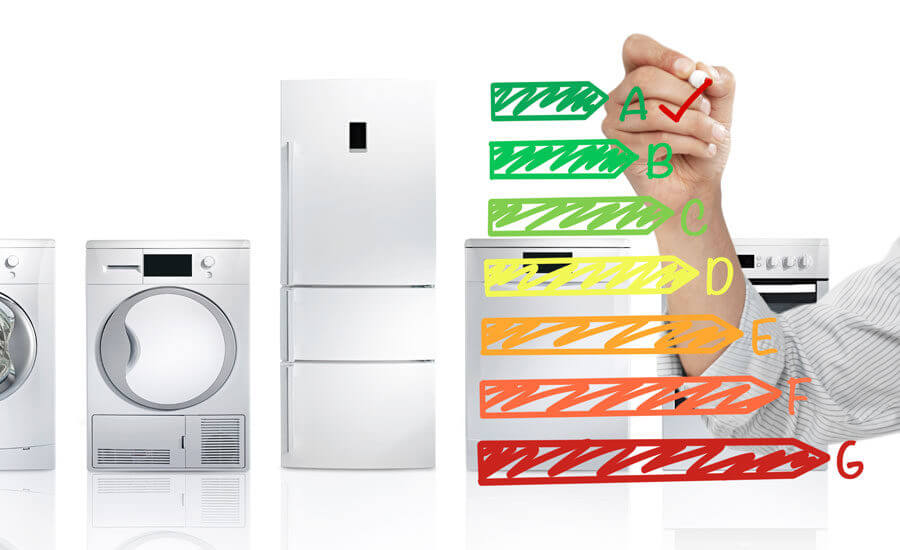
The Significance of Energy-Efficient Appliances:
- Energy Savings: Appliances are a major contributor to your household’s energy consumption. Energy-efficient appliances consume less electricity, translating into immediate cost savings on your energy bills.
- Environmental Benefits: Reduced electricity consumption from energy-efficient appliances means fewer greenhouse gas emissions associated with energy production. This contributes to a cleaner and more sustainable environment.
- Extended Appliance Lifespan: Energy-efficient appliances are often built with higher-quality components and are designed to last longer. This can reduce the frequency of replacements and save you money over time.
Choosing Energy-Efficient Appliances:
- Look for the ENERGY STAR Label: The ENERGY STAR label is a reliable indicator of energy efficiency. Appliances with this label meet or exceed stringent energy efficiency standards set by the U.S. Environmental Protection Agency (EPA).
- Consider Your Needs: When purchasing appliances, choose models that meet your specific needs while also offering energy efficiency. For instance, consider the size, features, and energy-saving options of the appliance.
- Perform Cost-Benefit Analysis: While energy-efficient appliances may have a slightly higher upfront cost, the long-term energy savings often outweigh the initial investment. Calculate the potential savings over the appliance’s lifespan to make an informed decision.
Benefits of Energy-Efficient Appliances:
- Lower Energy Bills: The primary benefit of energy-efficient appliances is reduced electricity consumption, leading to significant savings on your energy bills.
- Environmental Responsibility: Using appliances that are designed to be energy-efficient helps reduce greenhouse gas emissions associated with electricity generation.
- Extended Appliance Lifespan: Energy-efficient appliances are typically built to last longer, reducing the frequency of replacements and saving you money.
Maintenance and Considerations:
To maintain the energy efficiency of your appliances, it’s essential to follow manufacturer-recommended maintenance and cleaning instructions. Regular maintenance can help ensure optimal performance and longevity.
Investing in energy-efficient appliances with the ENERGY STAR label is a strategic and effective way to save electricity, reduce energy bills, and lower your carbon footprint. While these appliances may have a slightly higher upfront cost, the long-term benefits in terms of cost savings, environmental responsibility, and extended appliance lifespan make them a smart choice for your home. Make the switch to energy-efficient appliances and enjoy the many rewards of an energy-conscious household.
7. Regularly Clean Fans and Air Filters: Enhancing Energy Efficiency and Indoor Air Quality
Maintaining and cleaning fans and air filters in your home is a simple yet effective method for saving electricity and improving indoor air quality. By ensuring these components operate efficiently, you can reduce energy consumption and create a healthier living environment.
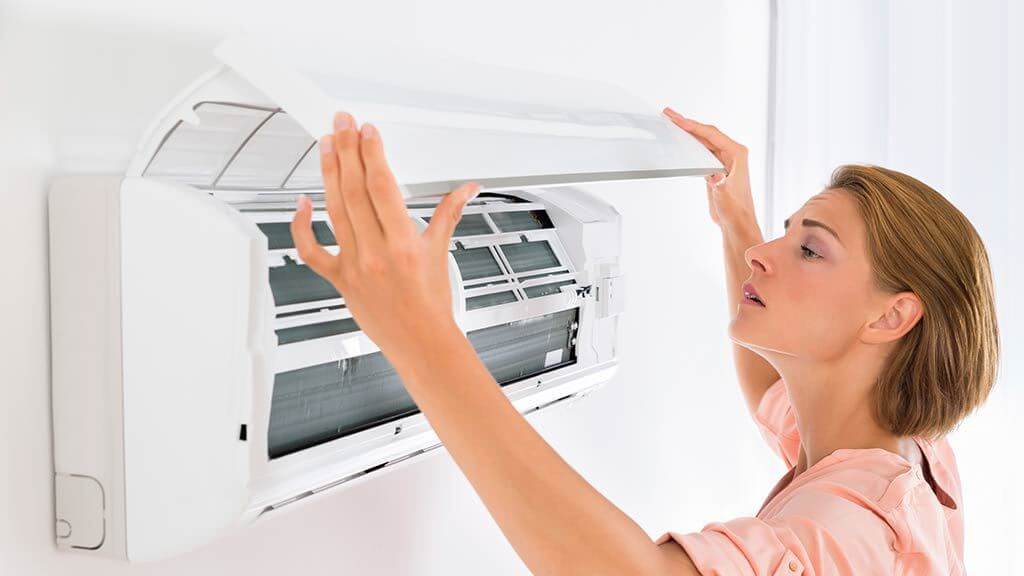
The Importance of Fan and Air Filter Maintenance:
- Energy Efficiency: Fans and air filters play a crucial role in regulating temperature and air quality in your home. When they operate efficiently, they consume less electricity, leading to energy savings.
- Indoor Air Quality: Clean air filters and well-maintained fans help maintain a healthy indoor environment by reducing the presence of allergens, dust, and pollutants in the air.
- Extended Equipment Lifespan: Regular maintenance can extend the lifespan of fans and air filters, reducing replacement costs.
Implementing Regular Cleaning and Maintenance:
- Clean and Replace Air Filters: Follow the manufacturer’s recommendations for cleaning or replacing air filters in heating, ventilation, and air conditioning (HVAC) systems. This ensures optimal air circulation and indoor air quality.
- Ceiling Fans: Dust and clean ceiling fans regularly to prevent dust and debris from accumulating on the blades, which can reduce fan efficiency.
- Exhaust Fans: Clean and maintain exhaust fans in the kitchen and bathroom to ensure they function properly, removing odors and moisture efficiently.
Benefits of Regular Fan and Air Filter Maintenance:
- Energy Savings: Well-maintained fans and clean air filters consume less electricity, leading to reduced energy bills.
- Improved Indoor Air Quality: Clean air filters help remove allergens and pollutants from the air, contributing to better indoor air quality.
- Extended Equipment Lifespan: Regular maintenance can extend the lifespan of fans and air filters, reducing the frequency of replacements.
Maintenance and Considerations:
It’s important to follow manufacturer-recommended maintenance schedules and cleaning instructions for your specific fans and air filters. Additionally, ensure proper disposal or recycling of used air filters in an environmentally responsible manner.
Regularly cleaning and maintaining fans and air filters in your home is a straightforward way to save electricity and improve indoor air quality. By ensuring these components operate efficiently, you not only reduce energy consumption but also create a healthier and more comfortable living environment. Embrace this practice and enjoy the rewards of energy efficiency and cleaner air in your home.
8. High-Efficiency Washing and Dishwashing: Saving Water and Electricity with Modern Appliances
Opting for high-efficiency washing machines and dishwashers is a substantial step towards conserving resources and reducing energy consumption in your household. These appliances are designed to use less water and electricity while still providing excellent cleaning results. Making the switch not only helps you save on utility bills but also contributes to environmental sustainability.
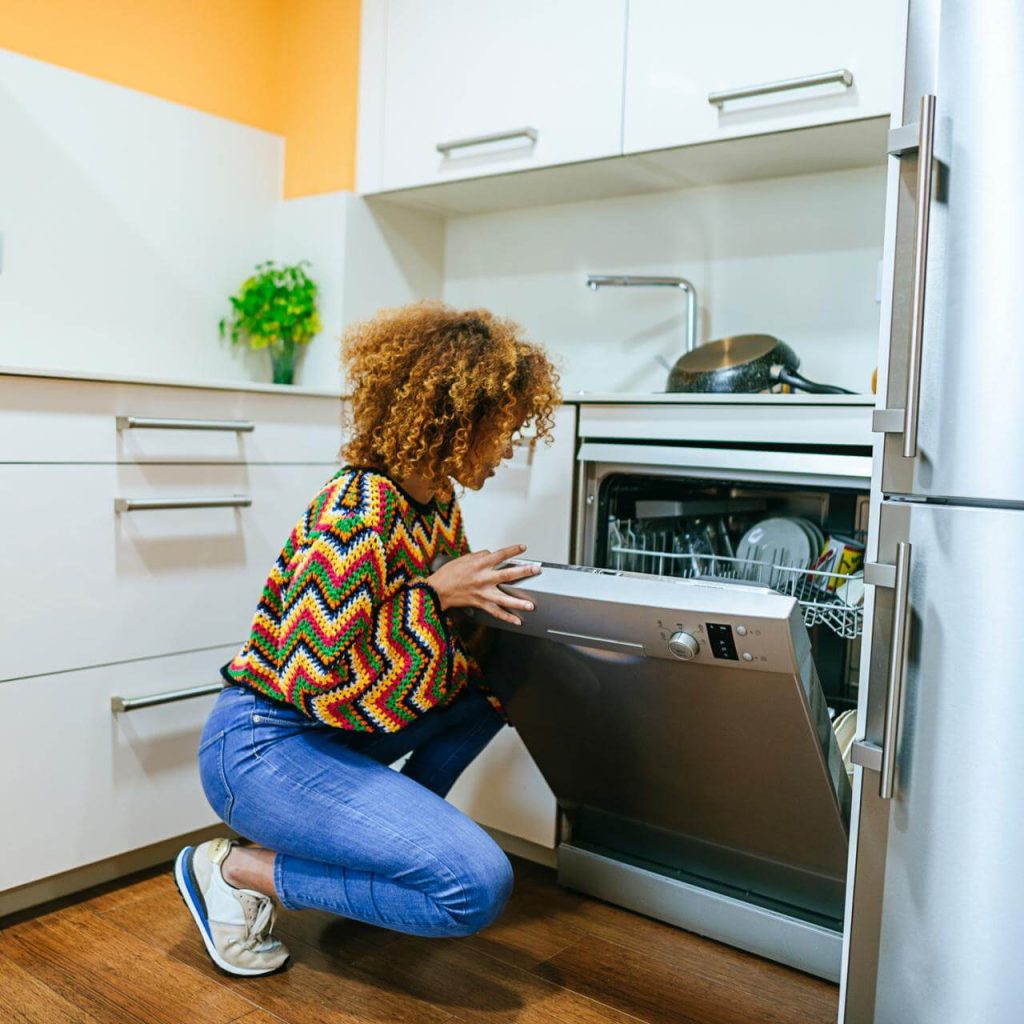
The Significance of High-Efficiency Appliances:
- Resource Conservation: High-efficiency washing machines and dishwashers are designed to minimize water and electricity consumption, preserving these valuable resources.
- Energy Savings: By using less water and electricity per cycle, you reduce the energy bills associated with laundry and dishwashing.
- Environmental Impact: Reduced water and electricity usage translates to a smaller carbon footprint, contributing to a more sustainable environment.
Selecting High-Efficiency Appliances:
- Look for the ENERGY STAR Label: ENERGY STAR-certified appliances meet stringent energy efficiency guidelines. These appliances are designed to perform exceptionally while using fewer resources.
- Understand Water Use: Compare the water usage specifications of different appliances. High-efficiency models typically use less water, making them a more eco-friendly choice.
- Assess Energy Efficiency: Consider the energy efficiency ratings of appliances, such as the energy factor (EF) for dishwashers and the integrated modified energy factor (IMEF) for washing machines. Higher values indicate greater efficiency.
Benefits of High-Efficiency Appliances:
- Lower Energy Bills: High-efficiency appliances consume less water and electricity per cycle, leading to significant savings on your energy bills.
- Resource Conservation: By reducing water and electricity consumption, you actively contribute to preserving valuable resources.
- Environmental Responsibility: A smaller carbon footprint associated with high-efficiency appliances helps mitigate the environmental impact of energy production.
- Improved Cleaning Performance: Modern high-efficiency appliances deliver excellent cleaning results while using fewer resources, making them a practical choice.
Maintenance and Considerations:
To maintain the benefits of high-efficiency appliances, follow the manufacturer’s recommended maintenance and cleaning procedures. Regularly clean filters, hoses, and detergent compartments to ensure optimal performance.
High-efficiency washing machines and dishwashers are eco-conscious choices that help save water and electricity. These appliances provide excellent cleaning results while reducing energy consumption, leading to lower utility bills and a reduced environmental impact. By embracing high-efficiency appliances, you not only enjoy cost savings but also actively contribute to the preservation of our planet’s valuable resources. Make the switch and experience the rewards of a more sustainable and efficient household.
9. Reduce Hot Water Usage: A Wise Move for Energy and Cost Savings
Hot water consumption in households is a significant contributor to electricity bills. By reducing your hot water usage and considering energy-efficient options like solar water heaters, you can make a substantial impact on both your energy expenses and your environmental footprint.
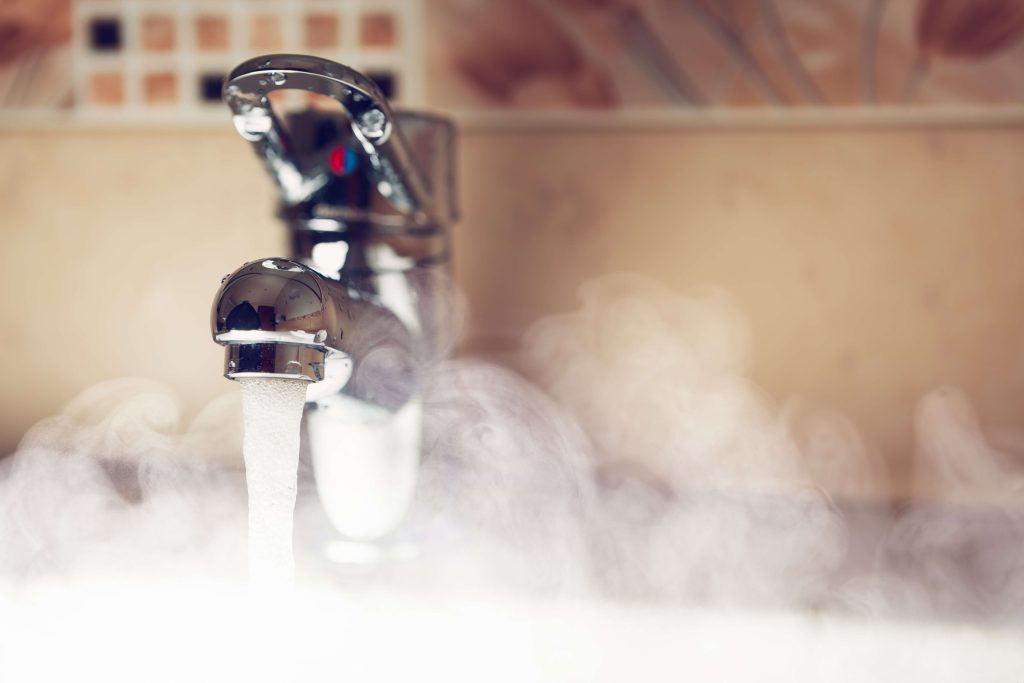
The Importance of Reducing Hot Water Usage:
- Energy Savings: Hot water heating consumes a notable amount of electricity. Reducing hot water usage directly translates into lower energy bills.
- Environmental Impact: By using less hot water, you reduce the environmental impact associated with electricity generation for water heating.
- Energy-Efficient Heating: Exploring solar water heaters as an alternative source of hot water can further reduce your reliance on traditional energy sources.
Implementing Hot Water Reduction Strategies:
- Shorter Showers: Encourage shorter showers and consider using a timer to limit shower duration.
- Fix Leaky Faucets: Promptly repair any leaky faucets or pipes to prevent hot water wastage.
- Lower Water Heater Temperature: Adjust the temperature setting on your water heater to a comfortable yet energy-efficient level.
- Use Cold Water for Laundry: Whenever possible, wash your clothes with cold water to reduce hot water usage.
- Consider Solar Water Heaters: Explore the feasibility of installing a solar water heater to harness natural heat from the sun for your hot water needs.
Benefits of Reducing Hot Water Usage:
- Lower Energy Bills: The primary benefit of reducing hot water usage is a substantial reduction in electricity consumption, leading to lower energy bills.
- Environmental Responsibility: By using less hot water, you contribute to a smaller carbon footprint associated with water heating.
- Sustainable Heating: Solar water heaters offer a sustainable, renewable energy source for hot water, further reducing your reliance on traditional electricity.
Maintenance and Considerations:
To maintain the benefits of reduced hot water usage, regularly check for leaks and maintain your water heater by following the manufacturer’s recommendations. Keep an eye on the solar water heater’s performance to ensure its efficiency.
Reducing hot water usage is a wise and responsible approach to saving electricity and lowering energy expenses. By implementing simple strategies such as shorter showers, fixing leaks, and considering alternative energy sources like solar water heaters, you actively contribute to a more energy-efficient and sustainable household. Make these changes and experience the rewards of lower utility bills and a reduced environmental impact.
10. Prompt Appliance Repairs: The Key to Efficient Electricity Usage
Ensuring the timely repair of malfunctioning electrical devices is a critical aspect of maintaining energy efficiency and saving electricity in your household. Delaying repairs can lead to inefficient operation, increased energy consumption, and higher utility bills. By addressing appliance issues promptly, you can maximize the performance of your devices and reap the benefits of lower energy costs and a reduced environmental footprint.

The Significance of Prompt Appliance Repairs:
- Energy Efficiency: Malfunctioning appliances often work less efficiently, consuming more electricity than necessary. Prompt repairs help restore optimal energy-efficient operation.
- Lower Energy Bills: Efficient appliances use less electricity, leading to reduced energy bills and cost savings.
- Environmental Responsibility: Reducing energy consumption through timely repairs contributes to a smaller carbon footprint and a more sustainable environment.
Why Timely Repairs Matter:
- Early Diagnosis: Detect appliance issues early to prevent them from worsening and requiring more extensive, costly repairs.
- Optimal Performance: Prompt repairs ensure that appliances operate as intended, consuming the least amount of electricity for their tasks.
- Safety: Some appliance malfunctions can pose safety risks, making timely repairs essential for your well-being.
Benefits of Prompt Appliance Repairs:
- Lower Energy Costs: Timely repairs lead to more efficient appliance operation, reducing energy consumption and lowering your utility bills.
- Environmental Impact: Reduced energy consumption and a smaller carbon footprint result from efficient appliance operation.
- Device Longevity: Addressing issues promptly extends the lifespan of your appliances, reducing the frequency of replacements.
Maintenance and Considerations:
To maintain the benefits of prompt appliance repairs, regularly inspect your devices for any signs of malfunction. Ensure that you hire qualified professionals for repairs to guarantee the quality of work.
Prompt appliance repairs are a fundamental practice for saving electricity and reducing energy costs. By addressing issues early, you maximize the energy efficiency of your devices, enjoy cost savings, and actively contribute to a more sustainable and environmentally responsible household. Make it a habit to promptly repair malfunctioning appliances, and experience the rewards of lower energy bills, device longevity, and a reduced carbon footprint.
Conclusion
Implementing these electricity-saving methods not only reduces your energy bills but also contributes to a cleaner and more sustainable environment. Try adopting these practices and encourage your family and friends to do the same to collectively build a more sustainable future for our planet.